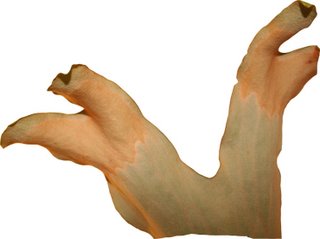
Water is probably the most important way to keep you plant alive. I use a water purification system, you can order one from here Aquasana Deluxe tell him I sent you. You should keep this fern's moss from getting to dry. I water my mads some times 2 times a day if it is in a lot of light. Good air movement is a must if you have a fan make shore you use it. The temperature should be kept around 60-95% if it gets much hotter then that the plant will probably die. Likes lots of humidity 50-85% is best. If you live in a place where it is to hot you should grow your plant in side. A climate controlled environment is the best thing for this one. Pleas don't be discouraged about trying to grow this one, I love the challenge of this plant.
Below you will see some problems I have had with them and things I have done to make them survive. I use cleary's 333f fungicide as a preventative once a month at a little less then a teaspoon per gallon of water. And I am trying another fungicide but haven't tried to see how the fern will react to it. Do not use phytone algaecide this will bern the fronds. I fertilize them about 2 times a week with a 30-10-10 about a 3rd of what they say per gallon. Would like to say again that water quality is the most important thing to keeping this fern alive long term. And if you have bad water you to should do something about it for yourself.
This is a photo of a healthy small P. madagascariense. You can see that the waffle shaped fronds and small fertile frond. Good example of a small healthy plant, the shield fronds are in grate shape no browning around the edges.
This is what a new healthy new shield frond looks like. No deteration around the edges. If you have any pests around this will be the first place they will go and eat. Normally will not kill the plant but will look bad.
This is a large mature plant with spore patches. This plant was attacked by a fungus or a bacteria on the edges of the frond. That is the most common cause of death.
Here is a close up of the damage that was caused by the fungus. Notice the brown edges. If this plant was still having the problem the waffle shapes frond would not look so healthy they would look limp like you forgot to water the plant.
This is what the shield frond would look like just before it is to late. Limp and you can see the brown edges. Not all brown edges are fungi. Some times it can be something in the air or in the water. Chlorine and chemicals can cause the tips of the plant to become week and allow fungi to attack the wounded area.
This is a p. madagascariense hospital, most of these plants were attacked buy the dreaded fungi.
In this photo you can see where the bud of the plant has died and all the shields have rotted off the plant.
I did not throw away the plant but treated the problem with cleary's 333f fungicide. About 2 month later new pups began to emerge from the roots. When this photo was taken the plants were about 4 months old. You can see if you give p.mad the right conditions they will thrive. What I did different was gave them filtered water and treated them for fungus
This is a plant I removed from a large specimen that died. You can see where the fungi has been stopped and healthy green area is still alive. This fern might be young but from the photo you can see small pups forming, and I have already removed 2 of the largest ones.